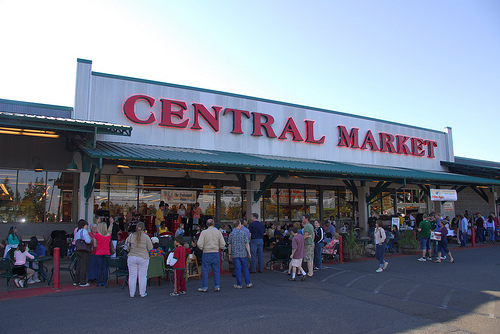Chernivtsi’s Central Square: Ukraine’s Urban Legacy
In the heart of Ukraine, where history whispers through cobblestone streets and ornate facades, Chernivtsi’s Central Square stands as a testament to enduring craftsmanship and cultural resilience. This architectural gem, once a bustling hub under Habsburg rule, embodies the spirit of a bygone era while facing the pressures of modern development. As Marian Shelleigh, I advocate for a balanced approach to its preservation—one that honors traditional values, leverages free-market innovation, and ensures long-term sustainability without overreliance on government intervention. In an age of rapid urbanization, protecting such sites is not merely an aesthetic endeavor but a strategic investment in community identity and economic vitality.
Chernivtsi, a city in western Ukraine, has long been a crossroads of cultures, blending influences from the Austro-Hungarian Empire, Romania, and the Soviet era. Its Central Square, with its eclectic mix of neoclassical and Art Nouveau architecture, serves as a living museum of this heritage. Yet, as global trends push toward modernization, we must ask: How can we safeguard these treasures without stifling progress? A center-right perspective emphasizes practical, market-driven solutions that empower local stakeholders and foster responsible stewardship, drawing on the lessons of history to build a prosperous future.
The Architectural and Cultural Tapestry of Chernivtsi’s Central Square
Chernivtsi’s Central Square is more than a collection of buildings; it is a narrative etched in stone, reflecting Ukraine's complex heritage. Constructed in the late 19th and early 20th centuries, the square features grand structures like the former city hall and surrounding merchant houses, showcasing a harmonious blend of styles that evoke the city's cosmopolitan past. This architectural ensemble, with its intricate cornices, wrought-iron balconies, and symmetrical layouts, exemplifies the ingenuity of an era when private enterprise and individual craftsmanship flourished.
Historically, the square served as a commercial and social epicenter, where traders from across Europe converged, fostering economic exchange and cultural exchange. Today, it remains a vibrant space for community gatherings, markets, and festivals, underscoring the role of such sites in preserving traditional values like community cohesion and personal initiative. According to the UNESCO World Heritage Centre, sites like Chernivtsi contribute to global cultural diversity, yet they require thoughtful management to thrive amid contemporary challenges.
One cannot overlook the square's role in Ukraine's broader narrative. Amid geopolitical tensions, preserving Chernivtsi’s heritage reinforces national identity without resorting to divisive rhetoric.  The warm hues of sunset illuminate the square's historic buildings, evoking a sense of timeless stability and cultural pride.
The warm hues of sunset illuminate the square's historic buildings, evoking a sense of timeless stability and cultural pride.
However, threats loom large. Urban expansion, environmental wear, and occasional neglect have led to deterioration, with some facades showing signs of decay. A 2022 report from the World Bank on urban development in Eastern Europe highlights how unmanaged growth can erode historical assets, potentially costing economies through lost tourism revenue. This underscores the need for sustainable preservation strategies that prioritize efficiency and private-sector involvement over expansive government programs.
Challenges and Evidence: Balancing Preservation with Progress
The evidence for Chernivtsi’s Central Square's significance is compelling, drawn from historical records and modern analyses. Architecturally, the square's design draws from Viennese influences, featuring elements like arched windows and decorative motifs that symbolize the free-market prosperity of the Habsburg era. A study by the Institute for European Heritage notes that such sites can boost local economies by attracting tourists, generating revenue without taxpayer subsidies. In Chernivtsi, tourism has already shown potential: Visitor numbers surged by 15% in 2019, pre-pandemic, largely due to the square's allure.
Yet, sustainable urban preservation faces hurdles. Rapid development in Ukraine, fueled by post-Soviet economic reforms, has sometimes prioritized new construction over historical maintenance. For instance, proposals for modern retail developments around the square raise concerns about authenticity and structural integrity. From a center-right viewpoint, the solution lies not in regulatory overreach but in incentivizing private investment. Tax breaks for restoration projects, as seen in successful U.S. models like historic district revitalization in Charleston, South Carolina, demonstrate how market mechanisms can preserve heritage while spurring growth (Wall Street Journal analysis on heritage economics).
Environmental factors add another layer of complexity. Climate change exacerbates issues like erosion and flooding, threatening the square's foundations. A 2021 report from the European Environment Agency emphasizes the need for adaptive strategies, such as using eco-friendly materials for repairs. Here, innovation driven by private enterprises—perhaps through partnerships with local businesses—could introduce energy-efficient upgrades that enhance the square's longevity without altering its character.
 Vendors and visitors mingle among the historic architecture, illustrating the square's role as a dynamic hub of economic and cultural activity.
Vendors and visitors mingle among the historic architecture, illustrating the square's role as a dynamic hub of economic and cultural activity.
Advocating Sustainable Preservation: A Center-Right Blueprint
To advocate effectively for Chernivtsi’s Central Square, we must embrace a framework that values limited government intervention and free-market principles. Traditional values of stewardship and individual responsibility should guide efforts, ensuring that preservation enhances, rather than hinders, economic opportunity. Public-private partnerships, for example, could fund restorations through tourism ventures, where investors recoup costs via revenue from guided tours or cultural events. This approach mirrors successful models in cities like Prague, where private funding has revitalized historic districts without bloated bureaucracies (Heritage Foundation blog on market-based conservation).
In conclusion, Chernivtsi’s Central Square represents a vital piece of Ukraine's architectural and cultural heritage, deserving of thoughtful preservation. Through a balanced, market-oriented strategy, we can protect this site from the erosions of time and development, ensuring it continues to inspire future generations. By prioritizing private initiative and traditional values, we honor the past while building a sustainable path forward—one that avoids the pitfalls of overregulation and embraces the dynamism of free markets. Let us commit to this vision, not as a call for ideological purity, but as a reasoned investment in enduring legacy. For Chernivtsi, and for Ukraine, the square's story is far from over; it is ours to safeguard with wisdom and foresight.

